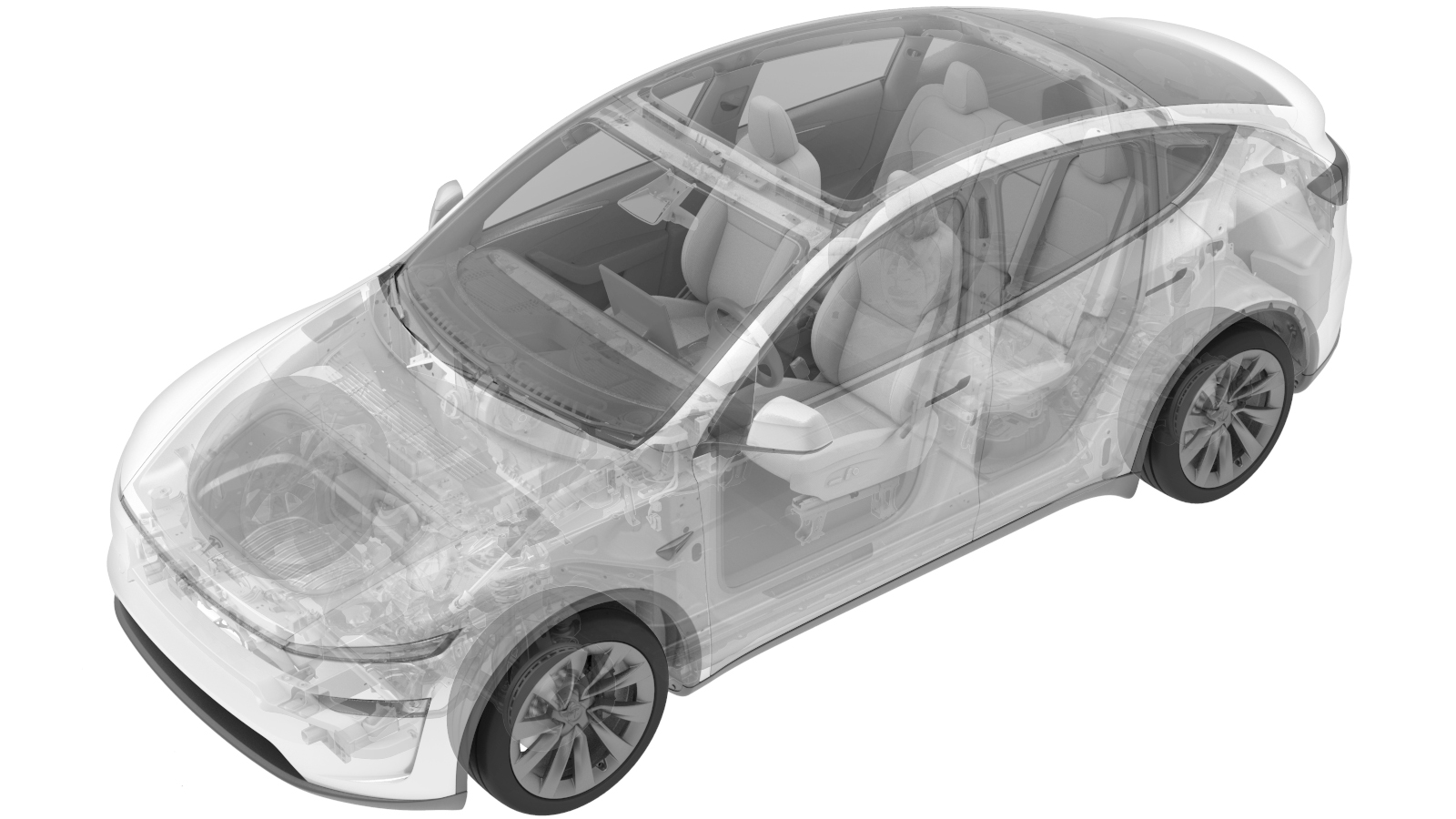Harness - Charger Output To DC (Remove and Replace)
 Correction code
1630011102
FRT
2.64
NOTE: Unless otherwise explicitly stated in the procedure, the above correction code and FRT reflect all of the work required to perform this procedure, including the linked procedures. Do not stack correction codes unless explicitly told to do so.
NOTE: See Flat Rate Times to learn more about FRTs and how they are created. To provide feedback on FRT values, email ServiceManualFeedback@tesla.com.
NOTE: See Personal Protection to make sure wearing proper PPE when performing the below procedure.
NOTE: See Ergonomic Precautions for safe and healthy working practices.
Correction code
1630011102
FRT
2.64
NOTE: Unless otherwise explicitly stated in the procedure, the above correction code and FRT reflect all of the work required to perform this procedure, including the linked procedures. Do not stack correction codes unless explicitly told to do so.
NOTE: See Flat Rate Times to learn more about FRTs and how they are created. To provide feedback on FRT values, email ServiceManualFeedback@tesla.com.
NOTE: See Personal Protection to make sure wearing proper PPE when performing the below procedure.
NOTE: See Ergonomic Precautions for safe and healthy working practices.
- 2025-06-04: Added instruction to zero adjust the Hioki resistance meter prior to measurement.
- 1076921-00-A FLUKE DIGITAL MULTIMETER 1587
- 1130480-02-A Slim Test Probes
- 1076927-00-A Hioki RM 3548
- 1076928-00-A Test Probes - Hioki 9461
Only
technicians who have completed all required certification courses are permitted to
perform this procedure. Tesla recommends third party service provider technicians
undergo equivalent training before performing this procedure. For more information on
Tesla Technician requirements, or descriptions of the subject matter for third parties,
see HV Certification Requirements. Proper personal protective equipment (PPE) and insulating HV
gloves with a minimum rating of class 0 (1000V) must
be worn at all times a high voltage cable, busbar, or fitting is handled. Refer to Tech Note TN-15-92-003, High Voltage Awareness
Care Points
for additional safety
information.
Remove all jewelry (watches, bracelets, rings, necklaces, earrings, ID tags, piercings, etc.) from your person, and all objects (keys, coins, pens, pencils, tools, fasteners, etc.) from your pockets before performing any procedure that exposes you to high voltage.
Proper Personal Protective Equipment (PPE) is required to perform this procedure:
- High Voltage (HV) insulating gloves
- Leather glove protectors
- High voltage glove tester
- Safety glasses
- Electrical hazard rated safety shoes
A glove inflator is the only recommended way to test HV gloves. Both HV gloves must pass testing before beginning this procedure. If either glove does not pass the air check, discard the pair.
Make sure that the HV gloves are not expired. HV gloves can be used up to 12 months after the testing date printed on the glove, but only 6 months after first use even if the gloves are still within the 12-month period.
Torque Specifications
| Description | Torque Value | Recommended Tools | Reuse/Replace | Notes |
|---|---|---|---|---|
| Nut securing negative output to DC bus charger harness to negative HV battery DC link busbar |
 4.5 Nm (3.3 lbs-ft) |
|
Replace | |
| Bolt securing RH ancillary bay bus cover |
 3 Nm (2.2 lbs-ft) |
|
Reuse | |
| Nut securing HV battery ancillary positive busbar to RH ancillary bay bus cover |
 4.5 Nm (3.3 lbs-ft) |
|
Replace | |
| Nuts (X2) securing 700V DC 63A compressor fuse to RH ancillary bay bus coverNuts securing 700V DC 63A PCS output fuse to RH ancillary bay bus cover |
 4.5 Nm (3.3 lbs-ft) |
|
Replace |
Remove
- Remove the positive DC link from ancillary bay. See HV Battery System - HV Battery Electrical Components - Ancillary Bay - DC Link - Positive (Remove and Replace).
-
Cut cable ties securing mega harness
to charger output to DC bus harness.
-
Remove insulators for fuses.
-
Remove 700V DC 63A PCS output
fuse.
TIpUse of the following tool(s) is recommended:
- 8 mm socket
- Electrical Protective Gloves
- Flex head ratchet/flex head torque wrench
-
Remove 700V DC 63A compressor
fuse.
TIpUse of the following tool(s) is recommended:
- 8 mm socket
- Electrical Protective Gloves
- Flex head ratchet/flex head torque wrench
-
Remove the nut that secure HV battery
ancillary positive busbar bracket, and then remove the bracket.
TIpUse of the following tool(s) is recommended:
- Electrical Protective Gloves
- 4 in extension
- Flex head ratchet/flex head torque wrench
- 8 mm socket
-
Remove nut securing negative output to
DC bus charger harness to negative HV battery DC link busbar.
TIpUse of the following tool(s) is recommended:
- Electrical Protective Gloves
- 4 in extension
- Flex head ratchet/flex head torque wrench
- 8 mm socket
-
Remove bolt securing RH ancillary bay
bus cover.
TIpUse of the following tool(s) is recommended:
- Electrical Protective Gloves
- 4 in extension
- Flex head ratchet/flex head torque wrench
- 8 mm socket
-
Lift busbar DC link cover up.
NoteBe careful not to damage cover when lifting, It is recommended to assist.
-
Remove charger output to DC Harness
from busbar DC link.
Install
-
Install charger output to DC Harness
to Busbar DC link.
NoteIt is not allowed to damage the insulation layer of the harness, if necessary use a 90 degree hook to assist, ensure that harness is not pinched.
-
Install nut securing negative output to DC bus charger harness to negative HV battery
DC link busba.
 4.5 Nm (3.3 lbs-ft)TIpUse of the following tool(s) is recommended:
4.5 Nm (3.3 lbs-ft)TIpUse of the following tool(s) is recommended:- Electrical Protective Gloves
- 4 in extension
- Flex head ratchet/flex head torque wrench
- 8 mm socket
- Perform a zero adjust of the Hioki resistance meter. See Resistance Meter (Zero Adjust).
-
Perform Hioki resistance test at charger output to DC bus.
NoteThe acceptable resistance is between 0.050 mΩ (50 μΩ) and 0.195 mΩ (195 μΩ). If the measured resistance is above 0.195 mΩ (195 μΩ), there is too much resistance in the High Voltage joint. Remove the fastener, clean areas with isopropyl alcohol, install fastener back and test again, as appropriate.NoteIf the resistance is lower than 0.050 mΩ (50 μΩ), reposition the probes and measure again. If after 4 attempts the resistance is consistently lower than 0.050 mΩ (50 μΩ), the test has passed; continue to the next step.
-
Install the busbar DC link cover.
NoteBe careful not to damage cover when lifting, It is recommended to assist.
-
Install bolt securing RH ancillary bay bus cover.
 3 Nm (2.2 lbs-ft)TIpUse of the following tool(s) is recommended:
3 Nm (2.2 lbs-ft)TIpUse of the following tool(s) is recommended:- Electrical Protective Gloves
- 4 in extension
- Flex head ratchet/flex head torque wrench
- 8 mm socket
-
Install HV battery ancillary positive
busbar to RH ancillary bay bus cover.
 4.5 Nm (3.3 lbs-ft)TIpUse of the following tool(s) is recommended:
4.5 Nm (3.3 lbs-ft)TIpUse of the following tool(s) is recommended:- Electrical Protective Gloves
- 4 in extension
- Flex head ratchet/flex head torque wrench
- 8 mm socket
-
Install 700V DC 63A PCS output fuse to
RH ancillary bay bus cover.
 4.5 Nm (3.3 lbs-ft)TIpUse of the following tool(s) is recommended:
4.5 Nm (3.3 lbs-ft)TIpUse of the following tool(s) is recommended:- 8 mm socket
- Electrical Protective Gloves
- Flex head ratchet/flex head torque wrench
-
Install nuts securing 700V DC 63A
compressor fuse to RH ancillary bay bus cover.
 4.5 Nm (3.3 lbs-ft)TIpUse of the following tool(s) is recommended:
4.5 Nm (3.3 lbs-ft)TIpUse of the following tool(s) is recommended:- 8 mm socket
- Electrical Protective Gloves
- Flex head ratchet/flex head torque wrench
-
Perform Hioki resistance tests (X4) at both 63A fuse input joint and 63A fuse output
joint.
NoteThe acceptable resistance is between 0.050 mΩ (50 μΩ) and 0.195 mΩ (195 μΩ). If the measured resistance is above 0.195 mΩ (195 μΩ), there is too much resistance in the High Voltage joint. Remove the fastener, clean areas with isopropyl alcohol, install fastener back and test again, as appropriate.NoteIf the resistance is lower than 0.050 mΩ (50 μΩ), reposition the probes and measure again. If after 4 attempts the resistance is consistently lower than 0.050 mΩ (50 μΩ), the test has passed; continue to the next step.
-
Install insulators for fuse and
bolts.
-
Install new cable ties securing mega
harness to charger output to DC bus harness.
- Install the positive DC link from ancillary bay. See HV Battery System - HV Battery Electrical Components - Ancillary Bay - DC Link - Positive (Remove and Replace).
- Move the LH and RH front seats back to their original position.
- Raise all the windows and close all the doors.
- Close the trunk.